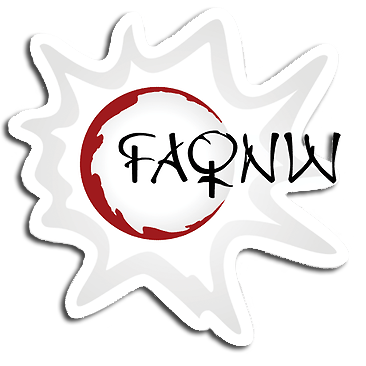There is no single way in which to define and conceive governance, but the term generally refers to a set of rules, written or unwritten, that govern the ways in which a group is run. Governance has three essential aspects: RELATIONAL, INDIVIDUAL, et COLLECTIVE.
Governance is first and foremost RELATIONAL
"That day, in the Sea World, a terrible clatter was heard: lightning and flames lit up the sky [...]. Two geese passing by saw a hole open in the roof of the world and witnessed the fall of the tree and the woman. One of them exclaimed: "What a strange creature is coming down from the Sky! I'm sure it can't survive in the water! Let's swim out together and catch it on our backs! [...] So the geese went in search of the Great Turtle. They found him not far away, swimming on the surface of the water. They showed him the woman and told him all about the circumstances of her discovery. Great Turtle wasted no time and immediately summoned all the Animals for a Council meeting.”
The relational aspect of governance refers to the way in which members of a community decide together what is essential for its well-being and future, but also so as to maintain healthy relationships between all members of the community where everyone has an important role to play. The tale shows us that it is through relationships that we are able to govern: the Great Turtle knows that it must convene the Council of Animals because this decision is important to all members of the Council. Governance is relational because all decisions we make must be made in relation to the people and environment around us.
These relationships are very important in Indigenous communities, as one Elder woman explained to us:
"My husband was a councillor... He works in the field of economic development, resource development for our area. And I support life, I'm a social worker, I support family life... And I said to him, I'm going to tell you about my work and my truth and where we can share, you know, and respect each other's roles... I loved that word when it was coined: socio-economic. You see, we can never be separated. Somebody figured out how to reconcile the social and the economic. We are never separate and so I said to him: you have to help us as a developer.”
To build healthy relationships, we must first create ourselves on an INDIVIDUAL level
"The Geese laid Yäa'taenhtsihk on the back of Great Turtle. The young woman took Lady Toad's mud in her hands. There was very little and the Animals feared it was too little. Slowly, Yäa'taenhtsihk began to spread it around the edges of the shell. Soon the earth developed a life of its own and spread around the young woman, all over the shell and beyond. It grew and spread until it formed an island. A huge island, as big as a continent. Our world: the island of the Great Turtle.”
Governance at the individual level is the right to define oneself as an individual, that is, to determine who one is as a person and what one wants to do for the future. Just as Yäa'taenhtsihk uses Lady Toad's mud, individual governance also involves having all the tools and resources one needs to be able to build and grow as an individual.
As one female leader remarked:
"Self-determination can take many forms. It starts with you. To know who you are, where you come from, to be proud, to know your culture, to be proud of your identity. Well, from there, I think there are no limits to be able to define what self-determination, our governance means.”
Governance is also COLLECTIVE
“The Council of Animals had saved the woman who had fallen from the Sky from drowning. They had offered her the island of the Great Turtle so that she could live and flourish here on earth. However, the Animals soon realized that the woman was missing an essential element for her well-being: light. Great Turtle therefore convened the Council to find a solution to this new problem.”
Governance is the way in which members of a community, nation, group or organization choose to organize themselves collectively, manage their affairs, share power and responsibility, and then decide for themselves what kind of society they wish to build for their future. In the tale, governance is shared collectively among all members of the Council of Animals. The Animals meet to make decisions because they know that as a group, they will be better equipped to find solutions that will meet the needs of all.
A female Elder also spoke of the importance of sharing power collectively in governance:
"Have you ever seen a skein of geese flying? Some of them fly in a V shape... When they fly like that, they sometimes have to fly very far. And when the leader of this group grows tired, he falls back, and a new leader takes his place. And the Elders told us, that's called shared leadership and that's what guided this group of geese. They knew that they had to respect this new leader who was going to lead them..."
Governance involves community members putting in place processes, structures and rules according to different models (traditional, customary, provincial, federal) in order to:
Governance therefore gives a community the direction and the means to achieve the things that matter to it. However, this governance must be defined by the members of the community and not imposed by an external authority, as one woman leader proposed to us:
"[Governance] should be based on the knowledge and experiences of the community. To me, that's where it should come from. Because, you know, the top-down approach has never worked... So for me, it has to come from the bottom up. The community grows from the groups...that's who we are and you have to accept that and go with that and you can't say it's wrong because it must be developed and driven by the community."
also refers to legitimate and effective governance. For Indigenous communities, the following elements are necessary for good governance:
includes rules to ensure that institutions and decision makers are accountable to the community they serve (for example, democratically elected or otherwise)
ensures that decisions are reviewed by one or more independent institutions and that administrative decisions can be appealed
ensures the availability of human resources to implement governance processes and deliver programs and services
which includes the community or Nation's resource management systems (both land and financial)
Today, the band Councils are facing many challenges to ensure good governance of their community. This is what a woman leader explained to us:
"So [band councils] are organizations that started as family businesses, even though it was in the chief's house and the two councillors were his brothers... There is no reference, there are no standards, they can't be oriented, they don't know, they don't have a manual for employee orientation or anything... It's like asking a municipal council to administer all the programs of a municipality or the politicians in Quebec City to administer all the government programs. They are both at the political level and the administrative level.”
YOUR TURN
Now that you know more about governance, take a moment to reflect on a time when you were called upon to make an important decision in your professional or personal life. Think about the different areas of governance:
To get a feel for the concept of "good" governance, imagine that you are part of an Indigenous organization of your choice and answer the following questions with that organization in mind:
Finally, do you think that the band council in your community respects all the principles of good governance? Using the solutions you thought of in the previous exercise, is there a solution you could try to implement in your own community?

